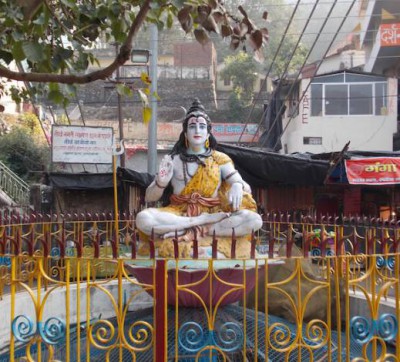RISHIKESH, INDIA. About to embark on an eight-month study abroad program in five different countries, – USA, Tanzania, India, New Zealand, and Guatemala, – I couldn’t have been more excited. But I also knew that it would be stressful. I would be living out of an incredibly small backpack (even though it was the larest I could find online), and sleeping at Maasai bomas and warehouses, surrounded by the same group of thirty study abroad students every day. Alone time would be a luxury.
Thus, planning my one-week vacation in India wasn’t hard. I knew I wanted peace and quiet. And so I decided to follow in the footsteps of the Eat, Pray, Love cliché. I would go to an ashram, where I could release some tension while practicing yoga and take advantage of some much-needed solitude.
After many hours of online research, I found a perfect fit: Anand Prakash Yoga Ashram in Rishikesh, which is more commonly known as the Yoga Capital of the World. Located 250 kilometers north of Delhi, in the valley of the sacred Ganges River, the town of Rishikesh is surrounded by mountains that are a gateway to the Himalayas. The town is also home to many temples and ashrams that offer vast variety of courses on Hindu philosophy, meditation and yoga.
The word “ashram” originates from a Sanskrit term “āśrama,” which literally means “hermitage.” Traditionally known as spiritual monasteries located in remote, natural environments, ashrams are a vital part of Indian culture and are nowadays to be found all around the world, uniting yogis, gurus, and other spiritual believers and seekers. Their teaching approaches can vary: some ashrams prefer their residents to be present on-site all day at all hours; others allow their students to leave during free time. Some are in the mountains, others in the cities. Some prohibit the use of technology; others leave these kinds of decisions up to the students.
Anand Prakash Yoga Ashram, where I stayed, was on the more lenient side, allowing its residents to spend afternoons walking down the banks of the Ganges or journaling and reconnecting with friends and family in the local cafés. As trekking, rock climbing, kayaking, rafting and other adventure sports are common daily activities in Rishikesh, free afternoons there are never boring.
The ashram, however, did ask that all its students regularly attend yoga classes, which were held twice a day from 6:00 to 7:45 and from 16:00 to 17:45. You also had to respect the silence from 21:00 until the end of breakfast. In that manner, peace for spiritual practices and much-needed rest were assured. Although I am far from being a yoga expert, – I actually had very few experiences with the discipline at the time, getting into the routine wasn’t hard.
Once you get comfortable with yourself, the silence gets addicting. The nervousness I felt sitting in the taxi that took me from the airport vanished after the first yoga class. I recognized that as residents and students we had different previous experience, reasons, goals… People came to find, to learn, to study, to connect, to reconnect, to disconnect. I had come to escape. We all fitted in. The ashram atmosphere was welcoming, accepting, and loving, and the effect this had on me can hardly be described in words. I became more peaceful and grounded after only the second day, something that I never expected.
It was extremely hard to leave. I knew that a week wasn’t enough to transfer the peace I felt to a different, more disordered environment. It was still too new, too fresh. It might have been only an illusion. The mere thought of reuniting with thirty students in the chaotic Ahmedabad brought me to the brink of panic. I predicted that staying longer would calm the anxiety that I was feeling, as it would root the sensation of peace deeper in me and teach me how to nurture it. At that time I knew that I wanted to return… one day.


